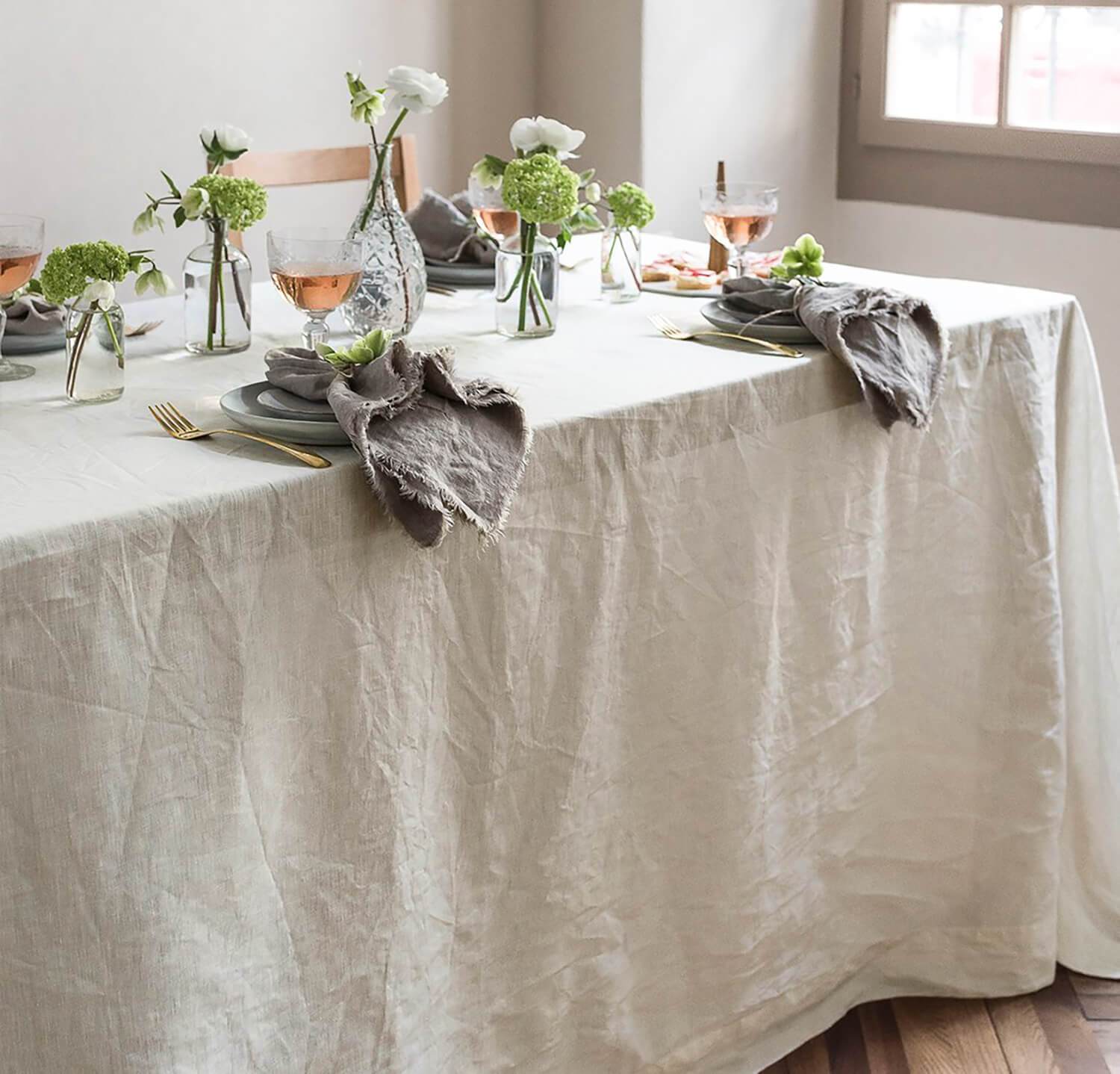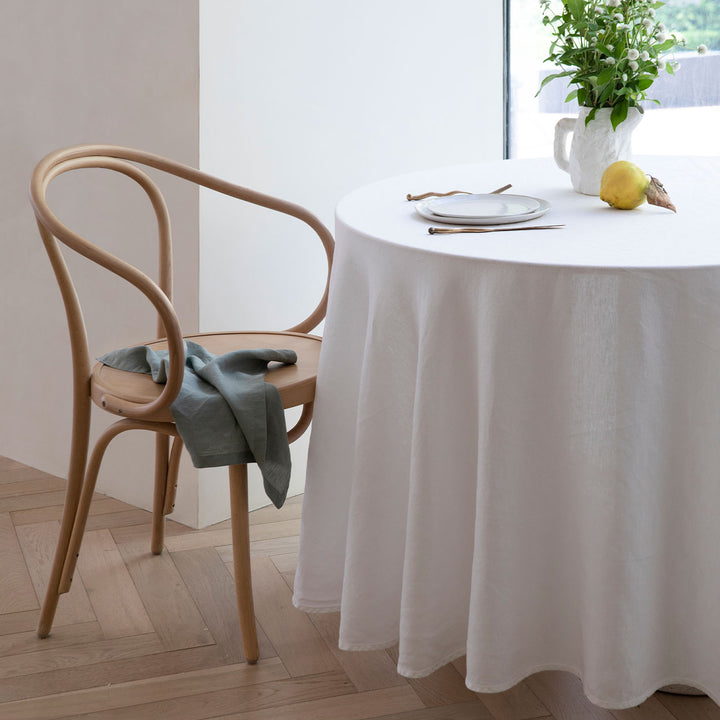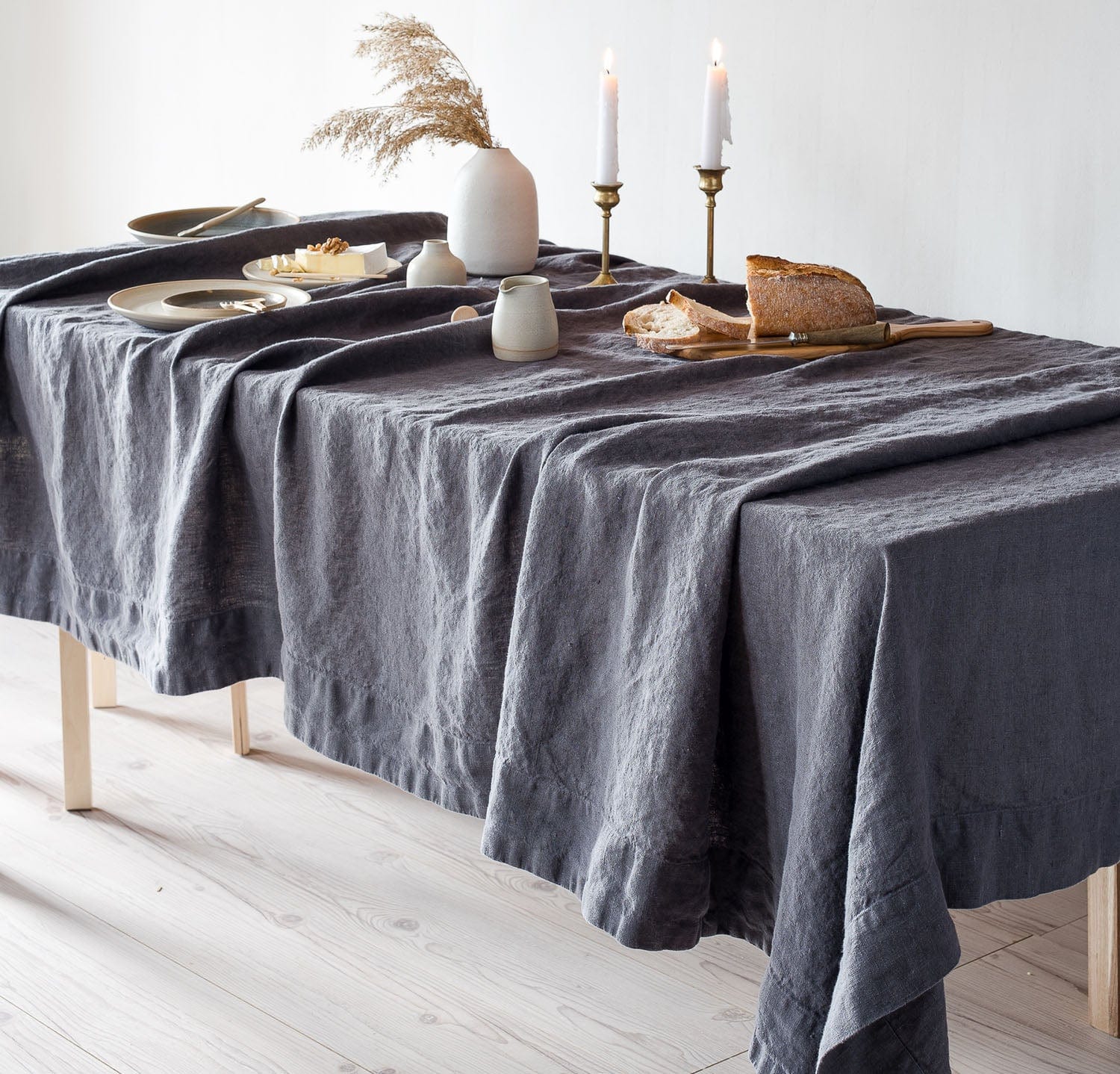Exactly how to Select the Perfect Table Runner for Your Dining Table
Exactly how to Select the Perfect Table Runner for Your Dining Table
Blog Article
Linen Fabric Innovations: Checking Out Modern Trends and Creative Applications in Layout and Textile Sector
From sustainable production techniques to sophisticated weaving technologies, the development of bed linen is improving the landscape of the textile sector. As we dive into the worlds of innovative style applications and the development of linen blends and crossbreed textiles, a brand-new chapter unfolds in which bed linen's function in future fabric innovations takes center phase.
Lasting Practices in Bed Linen Manufacturing
Sustainable techniques in bed linen production have actually become progressively important in the textile sector's efforts to decrease ecological influence and advertise ethical sourcing methods. Linen, an all-natural fiber stemmed from the flax plant, offers an array of benefits such as breathability, biodegradability, and resilience. However, traditional methods of bed linen manufacturing can entail considerable water usage, pesticide use, and energy-intensive processes.
To resolve these obstacles, several fabric producers are taking on sustainable techniques throughout the linen manufacturing process. This consists of sourcing flax from natural farms that prevent harmful chemicals and chemicals, executing water-efficient retting techniques to remove fibers from the flax stalks, and utilizing eco-friendly dyes and surfaces. In addition, some companies are purchasing renewable resource sources to power their production facilities and minimizing waste via recycling and upcycling campaigns.
Technological Improvements in Bed Linen Weaving
With the growing emphasis on lasting techniques in linen manufacturing, the textile sector is now experiencing a surge in technical innovations particularly focused on revolutionizing the art of bed linen weaving. These advancements are reshaping the means bed linen materials are generated, offering boosted performance, quality, and creative thinking in weaving strategies.
Among the essential technological developments in bed linen weaving is the combination of digital looms. These sophisticated looms are furnished with software that permits for intricate and complicated designs to be woven with precision. By digitizing the weaving process, makers can achieve higher uniformity and accuracy in their bed linen materials.
Additionally, innovations in thread spinning modern technology have made it possible for the manufacturing of finer and more resilient bed linen yarns - table cloths. This leads to softer and smoother linen fabrics that keep their quality even after several uses and laundries
In addition, the development of environment-friendly dyeing processes and finishes for linen fabrics is obtaining grip. These sustainable techniques not just minimize the ecological effect however additionally deal with the enhancing consumer need for fairly created fabrics.
Creative Style Applications for Linen
Innovative imaginative methods are significantly forming the innovative layout applications for linen in the fabric industry. Bed linen's all-natural visual appeal and capacity to mix with various other materials make it a favorite choice for developing special garments and devices that cater to the eco mindful consumer.
Furthermore, developers are trying out with bed linen in home decoration, using its breathable and sturdy nature to craft fashionable furnishings such as drapes, bedding, and upholstery. The appearance and drape of linen bring a sense of refinement and convenience to indoor rooms, including a touch of elegance to modern-day homes.

Bed Linen Blends and Crossbreed Fabrics

Crossbreed fabrics, on the various other hand, take the idea of mixing a step additionally by including additional aspects such as metal strings, recycled materials, or conductive fibers. These ingenious textiles not only broaden the style opportunities but likewise introduce practical elements like conductivity, antimicrobial properties, or enhanced resilience. Hybrid materials are progressively being used in various markets, including style, interior decoration, and technological textiles, where the navigate to this website demand for multifunctional materials is on the rise.
Bed linen's Function in Future Textile Innovations

In the realm of future textile advancements, bed linen is anticipated to be a principal in the advancement of advanced useful textiles. Developers and scientists are checking out methods to improve linen's integral top qualities via technical innovations, such as incorporating smart fabrics, nanotechnology, and efficiency finishes. These innovations aim to elevate linen's efficiency attributes, making it ideal for a more comprehensive series of applications, from activewear to safety apparel.
In addition, the mix of bed linen with other natural or artificial fibers opens limitless possibilities for developing unique fabrics with special homes and functionalities. By leveraging linen's features and exploring ingenious blends, the fabric industry is positioned to present amazing advancements that deal with evolving consumer requirements and sustainability requirements.
Conclusion
To conclude, the expedition of sustainable practices, technical developments, creative layout applications, bed linen blends, and its role in future fabric innovations highlight the continual development of linen material in the modern-day design and fabric industry. With a focus on advancement and creativity, the convenience and environment-friendly nature of bed linen make it an important product for manufacturers and developers alike, paving the method for more developments and innovations in the area of fabrics.
As we dig right into the realms of imaginative style applications and the emergence of bed linen blends and hybrid materials, a brand-new chapter unravels in which linen's function in future fabric advancements takes facility phase.
Discovering the combination of linen with other fabrics has actually led to the appearance of ingenious blends and hybrid textiles in the modern textile market. Linen blends provide a special combination of Web Site the characteristics of bed linen with those of various other fibers, resulting in materials that have enhanced residential properties such as enhanced toughness, improved draping, and decreased wrinkling.The advancement of linen blends and hybrid materials has actually set the stage for Bed linen to play a pivotal duty in driving future textile technologies.In the realm of future fabric developments, linen is anticipated to be a vital player in the development of advanced practical materials.
Report this page